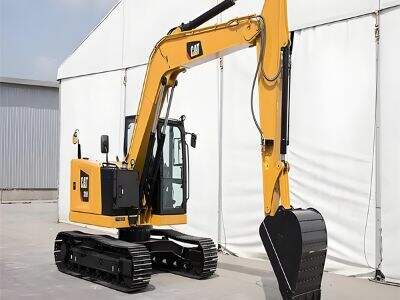Teie marsruudi planeerimine
Kas olete mõelnud sellele, kuidas mõni suur kaevanduskontser saab ühest töökoostisosast teise? Täis päev uuel teel algatamine võib tunduda hirmutavalt, kuid sobiva planeerimise ja teadmiste abil saab seda teha ohutult ja meelelahutavalt. Esimene samm on marsruudi planeerimine. Kui planeerite oma marsruuti, peate arvesse võtma, kui kaugelt minete, mis on teeolud ning millised takistused võivad teil teel esineda, nagu näiteks ehitustööd või veepoolestus.
Suurus ja kaal mängivad olulist rolli teie marsruudi plaanides. Kuna kujutlused võivad olla praktiliselt raskeks ja suureks, on teid piiravad mingite tee- ja silmapikkused ning -kaalud. Peate ka tagama, et teil on õiged lubad ja kindlustus, et transporteerida nii raskeid masinaid nagu kujutlused. See aitab kaitsta kõiki inimesi ja hoida teid seadustest ära. Lõpuks veenduge, et teie kamion ja remorv on head tingimused ja valmis tegema etteantud tööd.
Kujutluse laadimine
Pärast kõike planeerimist on järgmine oluline samm kujutluse täpne laadimine remorvi peale. See on väga oluline samm, mis tagab transpordi ajal nii varustuse kui ka inimeste turvalisuse.
Esitegel puhastage ekskavaator ja kontrollige seda kahjustuste või ausendite järgi enne, kui alustate laadimist. Kahjustuste kontroll on oluline, sest see võimaldab teil hoida probleeme minimaalsel tasemel. Seejärel saate remi mõne turvalise ja tasakaalu kohta parkida, kus saate töötada. Tugipunktide ja rampe kasutamine muudab ekskavaatori laadimise lihtsamaks ja ohutumaks. Ärge unustage oma laadimisel turvatänused, näiteks sobiva riistvara kasutamist ja õigete tööriistade kasutamist.
Kaupade kaalujagamise mõistmine
On kriitiliselt oluline teada oma kaalujagamise piiranguid ja regulatiivseid nõudeid raskete seadmete, nagu ekskavaatorite, transpordimisel. Selle sammu eesmärk on tagada, et teil oleks kindlalt järgitud mõned kohalikud seadused. Erinevates piirkondades on erinevaid reegleid ja elemendeid, seega tuleks aega panna neid vaatama üle oma piirkonnas.
Üldiselt peab käibussuse ja remi kombinatsioon olema piisavalt tugev, et kanteks seda Ekskavaator kaal. Võib-olla pead saama ka lisalubadeid suurte masinate transportimiseks avalikel teedel. Ületavate või ülekaaluliste laadide reeglite järgimine on ka väga oluline. See tähendab õigete märkide ja turvaseadmete kasutamist tee peal, et teised juhid teaksid, et sul on raskem laad.
Kaugusohutus sõitmisel
Kui transporteerida kaugust, siis pole see ainult masina laadimine ja unlöökimine; juht peab seda ka ohutult tee peal sõitma. Olenevalt sellest, kas sinu kaugus on suur või väike, siin on mõned kasulikud näpunäited kaugusega liikumiseks:
Sõidu ajal kontrolli regulaarselt peegleid ja seadista neid nii, et saada hea vaade tee peale.
Kaugus on suur, tee lähedased pöördu. Annan endale rohkem aega peatuda, kuna sul on raskem laad.
Järgi kõiki kiirust piiranguid ja teed seadusi. Ära peata või pöördu ühtlasi, sest see võib koorma vahetada või destabiliseerida.
See tähendab, et on raske ennustada halbaid tingimusi tee peal või takistusi, nagu kaevad, tee tööd või halb kliima.
Hoiduge kaugel teed muudest sõidukitest. Ärge annage end häirida, ärge kasutage telefonit ja keskenduge ainult sõitmisele.
Laadimine töökohta
Kui sa juba töökohta ekskavaatoriga saabud, peaksid olema teadlikud parimate praktikate kohta laadimise ja seadmete paigaldamise suhtes. See hõlmab ka asjaolu, et seadmed tuleb enne igasuguse töö algust korralikult paigutada ja stabiilisatada ning järgida kõiki juhiseid või protsesse, mis puudutavad teie tegemist tööd.
Esitege tuleb ette valmistada töökoht, veendudes, et potentsiaalseid ohte ei ole ja koht on puhastatud kõikjärgi, kividest või ebapiiratustest. See moodustab turva ruumi laadimiseks. tagajuht . Pärast selle, et kõik turvetoimingud tagatud on, laadige raviatör kaubaveost turvaliselt ja sobiva varustusega. Kui raviatör on maal, seadistage see õigesti ja veenduge, et masin oleks stabiilne. Kõik vedelikud peaksid olema täidetud, lisad kontrollitud ja juhtelemendid peavad olema funktsioneerivad.
Kohustuslik väljaandmine
Raviatöri transportimine rööbistekastur ühest töökoostisosast teise liigutamine võib esialgu tunduda üsna ärevalt, kuid see on võimalik, kui järgida õige plaanimist, ettevalmistust ja turvameetmeid. Kaalulimiitide ja regulatsioonide mõistmine, seadmete korrektne kinnitamine ja laadimine, ohutud sõitmismeetodid ning parimate praktiliste lahenduste kasutamine ekskavaatori vabastamiseks ja paigaldamiseks võivad suuresti kaasa aidata edukale ja tootlikule töökohale. Me usume oma kvaliteedisse ja ohutusse ning võtame orga Hangkui ohutuse ja kvaliteedi pärast. Me olemeg kindlad pühendumises tagada klientidele parim teenindus ja toetus, nii et kui nad rendivad meilt raskustööriistu, siis saavad nad olema kindlad, et kõik läheb sujuvalt ja ohutult.

 EN
EN








































 ONLINE
ONLINE